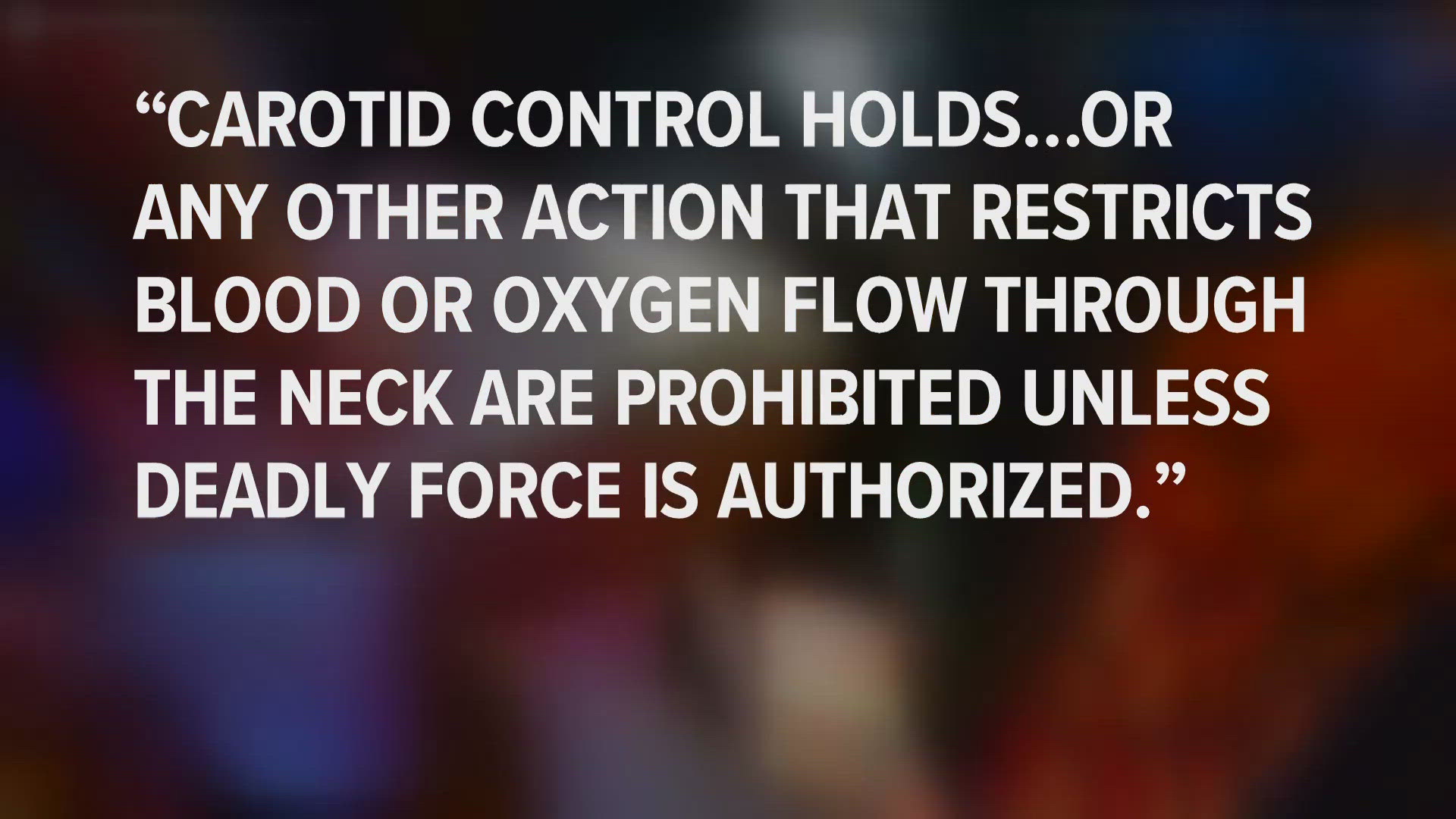CLEVELAND — The two Canton police officers involved in the arrest and subsequent death of Frank Tyson have been on the job for less than a year. Here’s a look at some department policies they are expected to follow for use of force and restraint.
From the moment officers entered the bar on April 18, it took less than 10 seconds for things to escalate. The department’s manual includes 800 pages of policy, including a section on the use of force.
The section reads: “When feasible, an officer shall use de-escalation techniques to reduce the need for force and increase the likelihood of voluntary compliance. Whenever possible, and when delay will not compromise the safety of the officer or another and will not result in the destruction of evidence, escape of a suspect or commission of a crime, an officer shall allow an individual reasonable time and opportunity to submit to verbal commands before force is used.”
3News requested the personnel files of the two officers but has not received them yet. But we know they graduated from the police academy at Stark State College on July 12, 2023. In less than a year on the job, they've taken at least one course through the Ohio Peace Officer Training Academy.
The department's policy manual also states that a reasonable officer on the scene will judge the “reasonableness of force.”
“Any evaluation of reasonableness must allow for the fact that officers are often forced to make split-second decisions about the amount of force that reasonably appears necessary in a particular situation, with limited information, and in circumstances that are tense, uncertain, and rapidly evolving," the manual reads. "While the ultimate objective of every encounter is to avoid or minimize injury, nothing in this policy requires an officer to retreat or be exposed to possible injury before applying force.”
When deciding whether to handcuff someone, “officers should carefully balance officer safety concerns with factors that include … the circumstances or crime leading to the arrest” and “the demeanor and behavior of the arrested person.”
An officer with reasonable cause “may use reasonable force to effect the arrest, to prevent escape or to overcome resistance. An officer who makes or attempts to make an arrest need not retreat or desist from their efforts because of resistance...”
Statewide, policies for making an arrest have changed since the death of George Floyd. That includes bans on holds that put pressure on the neck. The only exception is when an officer is defending themselves or another person from serious injury or death.
We still don’t know the exact cause of Tyson’s death, but video shows him handcuffed face down and at times with an officer’s knee on top of him.
There is no mention of kneeling in the policy manual. But it does read, “Carotid control holds, choke holds, or any other action that restricts blood or oxygen flow through the neck are prohibited unless deadly force is authorized.”

